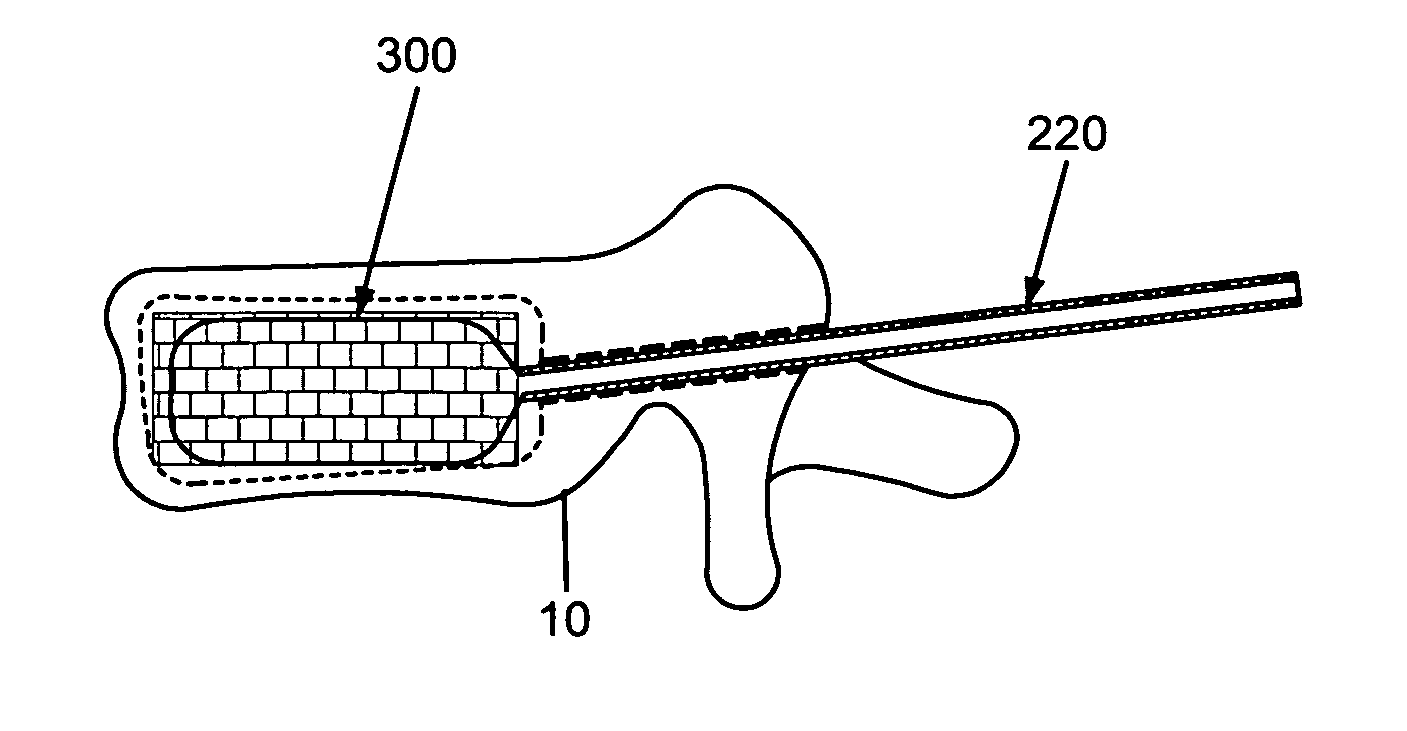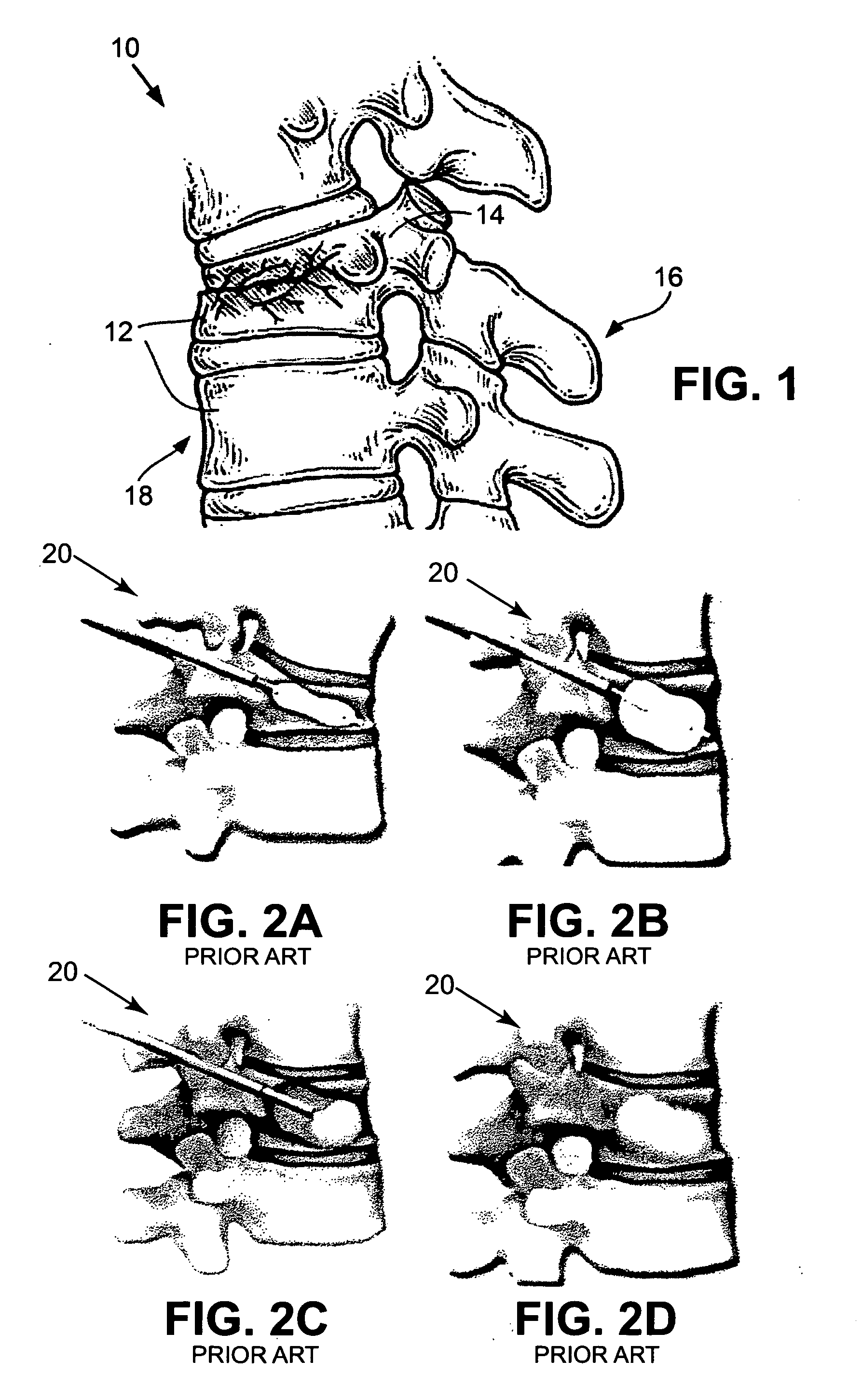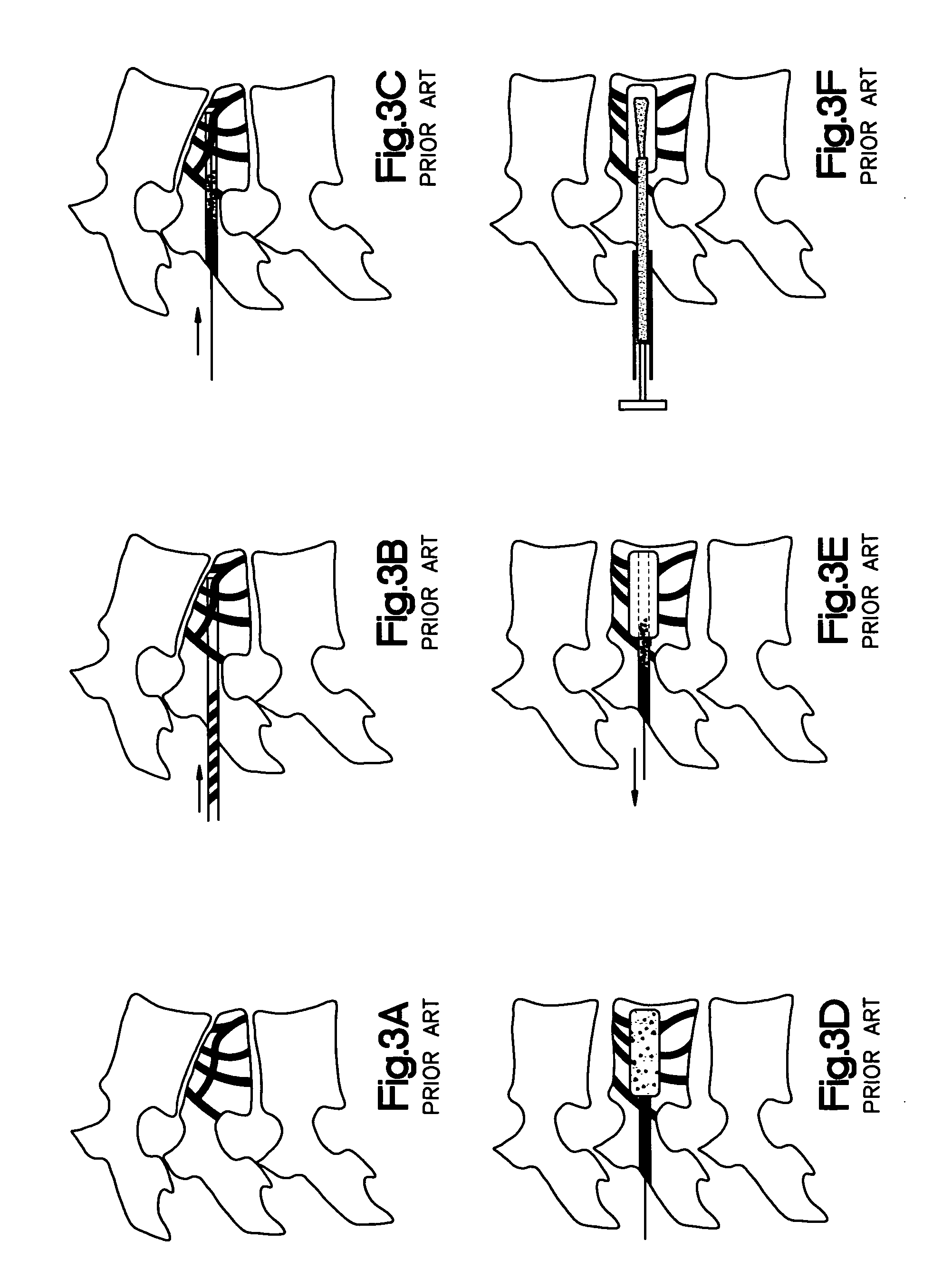Apparatus and methods for treating bone
a minimally invasive, bone technology, applied in the field of surgical implants, can solve the problems of repositioning the fractured bone, not addressing the problem of spinal deformity, and limiting the treatment of compression fractures and related deformities, so as to achieve the effect of restoring the height of the damaged vertebral body and minimally invasive bone augmentation
- Summary
- Abstract
- Description
- Claims
- Application Information
AI Technical Summary
Benefits of technology
Problems solved by technology
Method used
Image
Examples
Embodiment Construction
[0056]FIG. 4 shows a three dimensional view of an expandable implant 100 in an unexpanded state. Such an implant 100 may be inserted into a vertebral body (not shown) or other bone to repair damage to the bone, e.g., a spinal compression fracture. In some embodiments, the lordosis of the spine is reconstructed using a balloon catheter (e.g., such as described above for kyphoplasty) that carries one or more expandable implants that remain inside of the vertebral body and prevents the loss of reposition after removal of the balloon catheter or other device used for expanding the implant.
[0057] The implants are preferably expandable and resist collapsing forces, preferably forces, for example, between about 5N and about 300N. In some embodiments, the implants may have the form of a tube and may comprise one or more parts. Several implants may be inserted into each other to achieve a stable construct that can hold the interoperative compression forces acting on the vertebral body.
[005...
PUM
 Login to View More
Login to View More Abstract
Description
Claims
Application Information
 Login to View More
Login to View More - R&D
- Intellectual Property
- Life Sciences
- Materials
- Tech Scout
- Unparalleled Data Quality
- Higher Quality Content
- 60% Fewer Hallucinations
Browse by: Latest US Patents, China's latest patents, Technical Efficacy Thesaurus, Application Domain, Technology Topic, Popular Technical Reports.
© 2025 PatSnap. All rights reserved.Legal|Privacy policy|Modern Slavery Act Transparency Statement|Sitemap|About US| Contact US: help@patsnap.com



